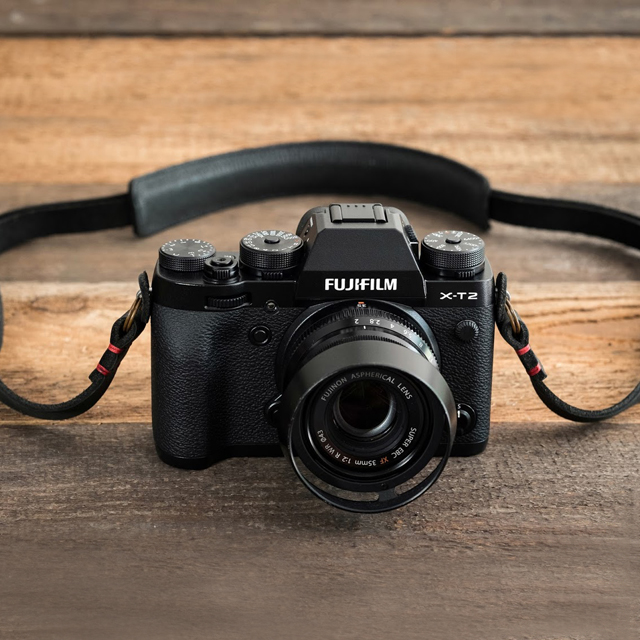Best Fuji Lenses

Looking for the be best Fuji lenses at affordable price? Bought your first Fujifilm camera and don’t want to use its kit lens? Would you like to take cools pics like Richard Tilney-Bassett or Carly Webber? Then pay attention to the list of top 10 best Fuji lenses for all photography genres.

What Is the Best Fuji Lens?
If you’ve decided to switch to a mirrorless camera system, Fujifilm is the best choice. Buy a camera and pick up an inexpensive lens exactly for your photography style and budget.

Fuji lenses have a recognizable design and legendary color rendering. Due to these two features, many photographers earlier or later start working with Fujifilm devices.
Best Fuji Lenses in 2026
Look at the list of my favorite Fuji lenses that will help you take awesome photos.
1. Fujifilm XF 35mm f/1.4 R

It is a very small and compact model. Great lens speed allows shooting almost in any lighting conditions without setting ISO more than 3200. Additionally, this Fuji lens has a very nice image.
Even with a fully open aperture, an object in the focus area is sharp. I think that 35 mm is ideal focal length for Fujifilm camera. It will be quite challenging to find a photography situation where I wouldn't need it.
I took a lot of close-ups with Fujinon XF 35mm F1.4 R, namely, portraits: from shoulder to full-length. So, I think it is a "must-have" accessory.
- Read more about the best Fujifilm cameras.
2. Fujifilm XF 56mm f/1.2 R

Fujinon XF 56mm F1.2 R is one of the most unusual lenses in the entire Fujinon XF lineup. The model has the highest lens speed. It does not feature all-weather protection and optical stabilization.
However, the lens has the highest image quality throughout the frame from the very edge to the centre. High lens speed of this best indoor Fuji lens allows you to work with a very small depth of field.
It is great especially when shooting close-ups and the focal length is quite universal. You can take not only fantastic portraits but many other shots as well. The only difficulty you may have when shooting at an open aperture is too much light. It is better to purchase a neutral gray filter and take pictures at f/1.2.
3. Fujifilm XF 90mm f/2 R LM WR

Many photographers waited for Fujifilm 90mm f/2 more than other X line models. Among the main features of this lens are high build quality, all-weather protection, a very beautiful bokeh, fast and silent focusing.
It also has amazing f/2 image sharpness, almost no chromatic aberrations or vignetting. The minimum focusing distance is 60 cm. Being one of the best Fuji X lenses, it is very sharp when necessary and has a gentle image.
Background and foreground blurring is accurate and soft. The rendering of color and halftones is delicate and smooth. In some situations, it allows achieving more than you have planned. I think this is currently the most impressive lens in the entire X-series.
- Read more about the best lenses for portraits.
4. Fujifilm XF 50-140mm f/2.8 R LM OIS WR

Prepare that this representative of new Fuji lenses will occupy all your backpack. Additionally, it weighs more than the camera itself. However, the model has a high-aperture zoom and in combination with 16-55 f/2.8, covers all focal lengths necessary for any photographer in 99% of cases.
The lens focuses very quickly thanks to the linear motor of the autofocus drive. The image is almost as sharp at the edges as in the center. When you select f/4 aperture, the photo quality becomes excellent.
It has splash protection and the build without retractable parts. Unlike some Fuji lenses, this model may catch a highlight when the oblique rays hit the front lens, so use a lens hood. One more disadvantage is a large weight (about 2.2 pounds) and size. Such dimensions may frighten some shooters.
- Check out the best camera bags.
5. Fujifilm XF 16mm f/1.4 R WR

XF 16mm shows excellent sharpness starting from f/1.4, gradually increasing the result up to f/5.6. At the same time, the quality of the picture is high not only in the central part but also along the frame edges.
The absence of geometric distortions and chromatic aberrations is its advantage. The aperture control moves easily even with one finger. The lens will be an excellent choice for those, who take architectural and landscape photos.
The thread with a 67 mm diameter will allow to use polarization or ND-filters. A minimum f/1.4 aperture makes it the best Fuji lens for night street photography.
- View more about the best lenses for concert photography.
6. Fujifilm XF 27mm f/2.8

Fujinon XF 27mm is the most compact lens among all Fuji X lenses. I think it is also the most unusual fixed lens because it has neither a ring for setting the aperture nor the focus switch.
It has only an electronic ring for focusing and there is simply no room for other features. In addition, it has the smallest aperture ratio - f/2.8 of all Fujifilm X fixes. But if it had more powerful lens speed, then the dimensions would have been different.
The focal length is quite universal for many creative tasks - 40mm in terms of a full frame. The viewing angle is close to the field of view of the human eye.
What for? Actually, the lens is suitable for travel and street shooting, because a photographer with a mirrorless and mini-lens looks like an amateur with a compact camera and will not embarrass people on the streets. Thereby you will get really sincere pictures.
- View more about the best lenses for wedding photography.
7. Fujifilm XF 50mm f/2 R WR

The lens is a high-quality, stylish model. It provides excellent sharpness starting from an open aperture. Chromatic aberrations are visible when shooting at an open aperture.
If you set at least f/2.8, there will be no color contours around contrasting subjects. The image will be detailed as much as possible at f/4. This Fuji lens is great for portrait shooting. 75mm focal length will allow you to capture the proportions of the model’s face and body without perspective distortion.
Additionally, you can blur the background beautifully, highlighting the main object thanks to the lens speed. Enjoy reportage and street photography with fast autofocus and compact design. Finally, moisture protection makes it the best Fuji lens for travel.
- View more about the best lenses for newborn photography.
8. Fujifilm XF 18-55mm f/2.8-4 R LM OIS

This model is what a street photographer needs. It is a reliable and very sharp zoom lens, especially when compared to Fuji lens kit optics. Formally, XF 18-55mm is a regular zoom that comes in a kit with some Fujifilm cameras but you can buy it separately.
The model will allow you to shoot a wide range of scenes thanks to the triple zoom and relatively high lens speed (f/2.8-4). Moreover, you won’t think about any other lenses for a long time.
The sophisticated optical design made XF 18-55mm compact, sharp and almost completely free from distortion. I also didn’t find any vignetting while testing it.
9. Fujifilm XF 100-400mm f/4.5-5.6 R LM OIS WR

Fujifilm XF 100-400mm will be an excellent choice for those, who specialize in shooting wildlife or sports. This Fujifilm telephoto lens is also perfect for taking pics of fast-moving objects thanks to linear autofocus motor drive.
The model is designed for shooting with the camera in hands, using 5.0-stop image stabilization system, but it weighs about 3.3 pounds. Moreover, it has dust and moisture protection and can work at temperatures up to -10° C.
Therefore, Fujifilm XF 100-400mm is suitable for shooting in any weather conditions. The reliability of this model is also enhanced thanks to the water-repellent coating of the front lens. All in all, the developers have tried to create the most compact and lightweight super telephoto lens.
- View more about the best camera for sports.
10. Fujifilm XF 10-24mm f/4 R OIS

XF 10-24mm is a unique ultra-wide-angle lens. The model has a large focal length range and f/4 lens speed, which is high enough for zoom. Moreover, it has a built-in image stabilizer and boasts of a really high photo quality.
The model stands out of the Fuji lenses thanks to perfect glare protection. It has almost no chromatic aberrations or problems with the frame geometry. I was surprised that the developers did not include a ring with a fully manual aperture.
Overall, XF 10-24mm is not cheap. However, this lens definitely deserves your attention thanks to a good combination of price/quality/versatility ratio.
Top 10 Best Fuji Lenses
| Image | Name | Features | |
|---|---|---|---|
 |
Fujifilm XF 35mm f/1.4 R
OUR CHOICE |
Check PRICE → | |
 |
Fujifilm XF 56mm f/1.2 R
BEST BOKEH |
Check PRICE → | |
 |
Fujifilm XF 90mm f/2 R LM WR
FOR PORTRAIT |
Check PRICE → | |
 |
Fujifilm XF 50-140mm f/2.8 R LM OIS WR
BEST ZOOM |
Check PRICE → | |
 |
Fujifilm XF 16mm f/1.4 R WR
BEST WIDE-ANGLE |
Check PRICE → | |
 |
Fujifilm XF 27mm f/2.8
COMPACT |
Check PRICE → | |
 |
Fujifilm XF 50mm f/2 R WR
|
Check PRICE → | |
 |
Fujifilm XF 18-55mm f/2.8-4 R LM OIS
|
Check PRICE → | |
 |
Fujifilm XF 100-400mm f/4.5-5.6 R LM OIS WR
|
Check PRICE → | |
 |
Fujifilm XF 10-24mm f/4 R OIS
|
Check PRICE → |
How to Choose Fujifilm Lenses Correctly?

Are you confused while choosing the best Fuji lenses due to a large number of letters in their names? It is especially relevant when it comes to selecting zoom lenses. That’s why you need to know how each letter is decrypted before paying money.
Abbreviation of Classes and Lens Types
HS refers to a budget class of lenses, designed for the prime cameras of the company.
XF indicates premium Fujifilm lenses. They usually have a high-quality metal body and brilliant optical characteristics.
FIX lenses are marked by one number (for example - 14mm, 60mm, 90mm);
ZOOM - lenses with variable focal length, from the minimum to the maximum possible are market by two numbers (for example - 16-55mm, 18-135mm, 50-230mm).
The aperture value (these are examples; the actual indicated numbers will differ on specific lenses):
1:1.4 - found on both fixed and zoom lenses;
1:3.5-5.6 - found on zoom lenses.
The Red Badge lenses
The XF Red Badge lenses are widely-recognized lenses that proven to be the best in the industry among other XF lenses thanks to their remarkable focusing speed and top-notch image quality.
Once you come across the lens with a red badge, you can be sure that they are worth paying for. Nowadays, you can find 3 XF Red Badge lenses - the 50-140mm f/2.8, the 16-55mm f/2.8, and the 100-400mm f/4.5-5.6.
All these devices have a robust weatherproof coating, so you can rely on them regardless of the climate zone and weather conditions you are shooting in.
Abbreviations of Used Technologies
R - this optics has an aperture adjustment ring.
LM (Linear Motor) - the linear motor is used to move the elements of the lens during automatic and manual focusing.
OIS (Optical Image Stabilization) - the lens has optical image stabilization.
EBC (Electron Beam Coating) - has a coating used to minimize glare and ghosting by increasing light transmission.
ALG (All-Group Focusing) - means that all optical elements move during focusing.
WR (Water Resistant) - waterproof lenses.
APD (Apodization) - a special APD lens is used to make the edges of objects that are out of focus soft and smooth.
Nano-GI (Nano gradient index) refers to a high-tech nano-coating of lenses, which reduces the refractions and reflections of light.



